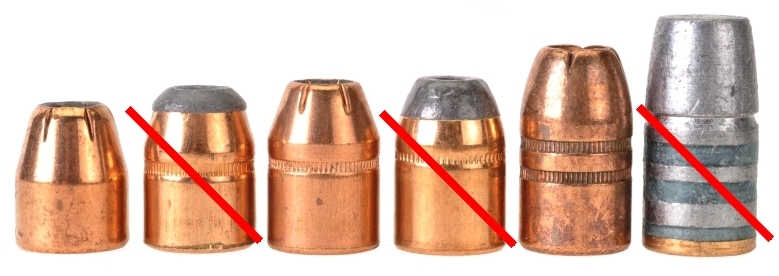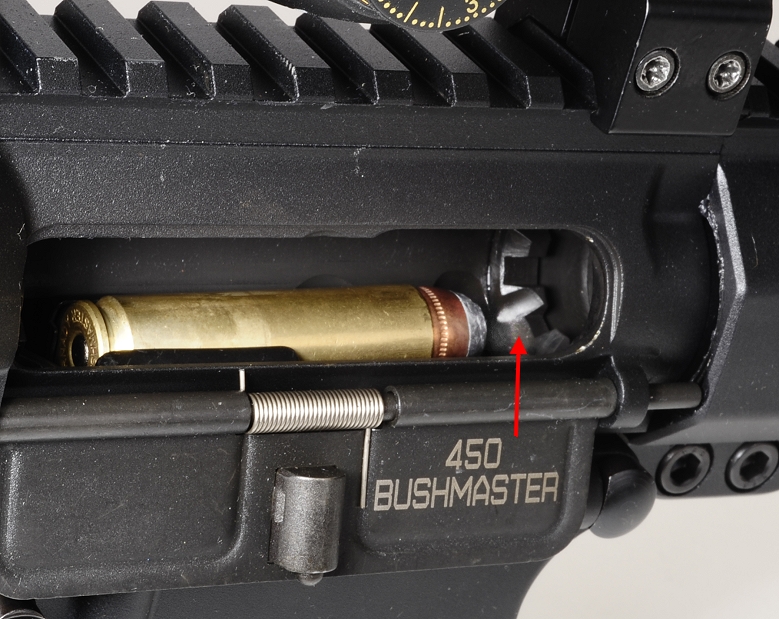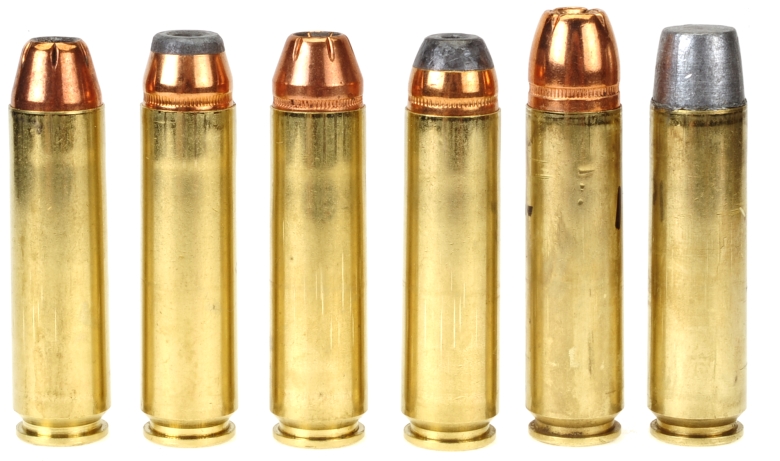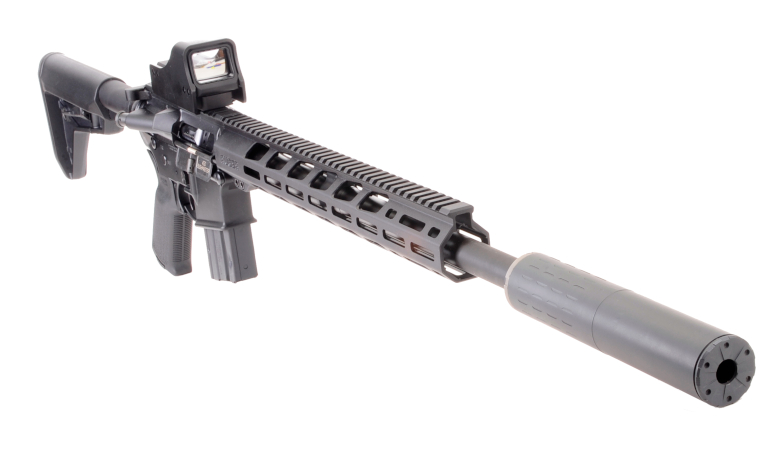October 9, 2022 – Handloading, more specifically handload development, represents a great deal of trial and error, testing and analyzing. Not the same as opening a handload manual and picking from the list presented, which is perfectly fine when instructions and cautions are honored.
I tend to use reloading manuals and avoid online data where I am not sure of the source. My use of manuals is to look for possible combinations of components not within my experience and as a “sanity check” when reviewing loads I have developed.
Flogging Handloads…
This time, things are being done differently. Usually, load data is posted after it is screened and any and all issues have been cleared. The assembled ammunition cycles correctly and the three or four loads per bullet weight published are the most accurate.
What readers don’t see are piles of brass, powder and bullets expended and all of the loads that were not acceptable for a myriad of reasons They also don’t see the yield down that occurs from initial effort to final for publishing. Part 1 was preliminary. This, Part 2 is an interim piece with a temporary roadblock. Part 3 will be a conclusion.
A step for ME to learn something
I decided that a taper crimp would be used across the board. To facilitate that change, bullet seating depth needed to be adjusted to place the crimp surface at a location on the bullet that was full shank diameter. Cannelures and sloping ogives needed to be avoided.
A taper crimp die is a bit like a shotgun choke. Somewhere between the beginning and the end is a restriction that acts more like a collet that applies near parallel pressure to a cartridge case mouth, rather than curl it in like a roll crimp.
So I brushed some Dykem layout fluid on the case, fed it into the taper crimp die. and let the die mark the position of contact for the crimp. I marked the line close to the case head with a scribe so I would know at what point along the die’s length the crimp was being formed.
The space between the crimp and the scribe mark measured 1.245″. That measurement was transferred to the telescoping gauge, from center of expanding buttons to top edge of the black mark on the gauge shaft. Then an inside diameter measurement was taken at that point inside the die, 0.477″. The point of crimp on the assembled cartridge measured 0.480″. Spring back? For reference, the SAAMI case mouth diameter is 0.480″ and that forms the headspace contact surface.
The Part 1 use of a roll crimp proved not OK. As the crimp was rolled, and then flattened with the taper crimp die, the case mouth was squared. This presented a marginal perpendicular surface for headspacing that may have gotten help from the rifle’s extractor in holding the primer in position for the firing pin.
For now, a taper crimp is being used. However, when I take a run at the 450 Bushmaster again, I will use a factory crimp die that makes a stab crimp just below the case mouth, staying away from a properly sized case mouth.
To increase case tension for bullet retention, I inside chamfered each case mouth and eliminated the case expander die for all jacketed bullets, but left it in place for cast bullets as necessary.
| Bullet | Bullet Type |
Weight Grains |
Bullet Length “ |
Final COL |
| Hornady HP/XTP | JHP | 200 | 0.567 | 2.015 +/-0.000 |
| Sierra | JHC | 240 | 0.643 | 2.060 +0.060 |
| Hornady HP/XTP | JHP | 250 | 0.665 | 2.060 +0.040 |
| Speer | JHP | 260 | 0.685 | 2.060 +0.040 |
| Hornady | XTP/Mag | 300 | 0.808 | 2.200 -0.040 |
| Cast Performance | WNFP | 360 | 0.933 | 2.060 -0.040 |
The cannelure location depth column was eliminated as irrelevant. The final cartridge COL is noted, along with the degree of change from preliminary data. Where changes to charges weight and powder types proved essential, these adjustments are noted on the included load data table.
Tedious, mind numbing minutia…
If I had to live through it, so should you. Kidding, only kidding… So, I wanted to keep the bullet positions as close as possible to the data set in Part 1 to avoid net case capacity changes and, subsequently, having to make major changes to powder charges. The handload round count was expanded to better gauge feed and cycling reliability.
Above, all with taper crimps with revisions to all but one COL. Far left 200 grain was unchanged, second through fifth, were all increased to move the case mouth away from the cannelure. The sixth’s COL was reduced to put mouth above the crimp groove.
Roadblock alert…
So here I was, lots of test ammo of all types, ready to collect velocity and accuracy data, and the failure to feed gremlins arrived in force. A loud voice said, “Joe, you are not going to have a fun day”. It was the UPS guy; he always has something to say. Not unlike the Stranger in The Big Lebowski.
It was the 60s and 70s all over again where buyers of 1911s immediately modified chambers, chamfering them to reliably feed soft nose hollow point and flat nose bullets. Now, like then, the problem was not the pistols but rather people’s insistence to shoot ammo the firearm was not intended to be fed.
The Ruger MPR is already ramped to assure feeding factory Bushmaster cartridges, which the rifle did without skipping a beat. Ten minutes and a rotary file would not address the problem as the barrel extension is home to the locking lugs that support a rotated closed bolt. My objective was, and remains, reliable function with developed handloads that do not require any firearm modifications.

All of the jacketed bullets fed, fired and cycled fine. All of the lead bullets hit the feed ramp on the barrel extension and stayed there holding the bolt open like a doorstop. Consequently and subsequently, they were temporarily removed from the mix.
It’s all about the lead, man…

So the bolt moves forward quite gingerly, picks up a fresh cartridge and runs it into the barrel extension where soft lead meets hard steel at an intersecting angle to acute to surmount. The round stops its forward movement, the bolt stops just behind it, no discharge to follow. The result looks a bit like the round pictured left.
The issue of bullet deformation and failure to feed is only AR related so, based on handload accuracy and velocity, all will remain for bolt action applications. At least until I have a fix for AR feed. they will definitely remain for bolt action applications.
The 360 grain hard cast, checking with a borescope, really didn’t lead up the bore or the gas port. I also did not see signs of rate of twist stripping material from bullet shanks. If anything, I may change to a coated bullet as added insurance against bore leading. Acme Bullet makes a good, coated 350 grain cast for the 455 Casull that should work well in this application.
I think I actually have a simple tweak that would allow their use in an AR without introducing problems with spire tip ammunition. I might take a run at this for a future installment.
Final results…
Warning: Bullet selections are specific, and loads are not valid with substitutions of different bullets of the same weight. Variations in bullet length will alter net case capacity, pressure and velocity. Primer selection is specific and primer types are not interchangeable. These are maximum loads in my firearms and may be excessive in others. All loads should be reduced by 5% as a starting point for development where cartridges have greater than 40 grains in capacity and 10% for cartridges with less than 40 grain capacity following safe handloading practices as represented in established mainstream reloading manuals. Presentation of these loads does not constitute a solicitation for their use, nor a recommendation.
| 450 Bushmaster – Standard Pressure |
|
| Firearm | Ruger MPR 450BM |
| Barrel Length | 16.10″ |
| Max Case Length | 1.700″ +0.000″/-0.010″ |
| Min – Max COL | 2.000″ – 2.260″ |
| Primer | CCI 450 – Small Rifle Magnum |
| Bullet Diameter | 0.4525″ +0.000″/-0.0030″ |
| Reloading Dies | Hornady |
| Bullet Type | Bullet Weight Grains |
Net H2O Grains Capacity |
COL” | Powder Type | Powder Charge Grains |
Muzzle Velocity fps |
Muzzle Energy ft/lbs |
100 Yd 3 Shot Group” |
| Hornady HP/XTP | 200 | 49.5 | 2.015 | Alliant 2400 | 37.0 | 2330 | 2412 | 0.8 |
| Hornady HP/XTP | 200 | 49.5 | 2.015 | IMR 4227 | 43.5 | 2290 | 2329 | 0.7 |
| Hornady HP/XTP |
200 | 49.5 | 2.015 | RS Enforcer | 40.0 | 2390 | 2537 | 1.0 |
| Sierra Sports Master | 240 | 48.9 | 2.060 | Alliant 2400 | 33.5 | 2137 | 2434 | 1.1 |
| Sierra Sports Master | 240 | 48.9 | 2.060 | Hodgdon H110 | 41.00 | 2099 | 2349 | 0.9 |
| Sierra Sports Master | 240 | 48.9 | 2.060 | IMR 4227 | 40.5 | 2152 | 2469 | 1.1 |
| Hornady HP/XTP | 250 | 47.0 | 2.060 | RL 7 | 44.0 | 2035 | 2299 | 1.2 |
| Hornady HP/XTP | 250 | 47.0 | 2.060 | Hodgdon CFE BLK- | 48.0 | 2047 | 2329 | 0.7 |
| Hornady HP/XTP | 250 | 47.0 | 2.060 | IMR 4227 |
39.0 | 2066 | 2370 | 0.5 |
| Speer Uni-Cor | 260 | 47.5 | 2.060 | Alliant 2400- | 32.5 | 2043 | 2410 | 1.4 |
| Speer Uni-Cor | 260 | 47.5 | 2.060 | Alliant RL 7 |
45.0 | 1981 | 2266 | 1.2 |
| Speer Uni-Cor | 260 | 47.5 | 2.060 | IMR 4227 | 39.0 | 2038 | 2398 | 1.7 |
| Hornady XTP/Magnum | 300 | 45.5 | 2.160 | Alliant RL7 |
42.0 | 1979 | 2618 | 0.9 |
| Hornady XTP/Magnum | 300 | 45.5 | 2.160 | IMR 4227 |
37.0 | 1985 | 2625 | 0.6 |
| Hornady XTP/Magnum | 300 | 45.5 | 2.160 | IMR 4198 | 40.0 | 1938 | 2503 | 1.1 |
| Hornady XTP/Magnum | 300 | 45.5 | 2.160 | Trail Boss |
12.5 | 1062 | 751 | 1.4 |
| Cast Performance |
360 |
36.8 | 2.060 | Alliant 2400 | 27.0 | 1794 | 2573 | 1.5 |
| Cast Performance |
360 |
36.8 | 2.060 | Winchester 296 – |
32.5 | 1806 | 2608 | 1.0 |
| Cast Performance |
360 |
36.8 | 2.060 | IMR 4227- |
32.0 | 1773 | 2513 | 1.2 |
| Cast Performance |
360 |
36.8 | 2.060 | Trail Boss |
11.0 | 1021 | 834 | 1.5 |
All of the handloads on list approximate SAAMI pressure levels, with the exception of subsonic, which are significantly less. All of the load development and velocity and accuracy data was collected from the Ruger AR556 450 Bushmaster. However, all loads in green are recommended for bolt action applications only. While they are within pressure parameters, at this point in time, they will not reliably feed from any AR type platform. Those appearing on the table were fed single shot.
Where now?
One more crack at the Ruger AR MPR and 450 Bushmaster cartridge. Some further look at crimping types, an alternative bullet heavyweight and a nondestructive modification to get to reliable feed. This may go out a couple of weeks while I am awaiting material delivery.





Email Notification